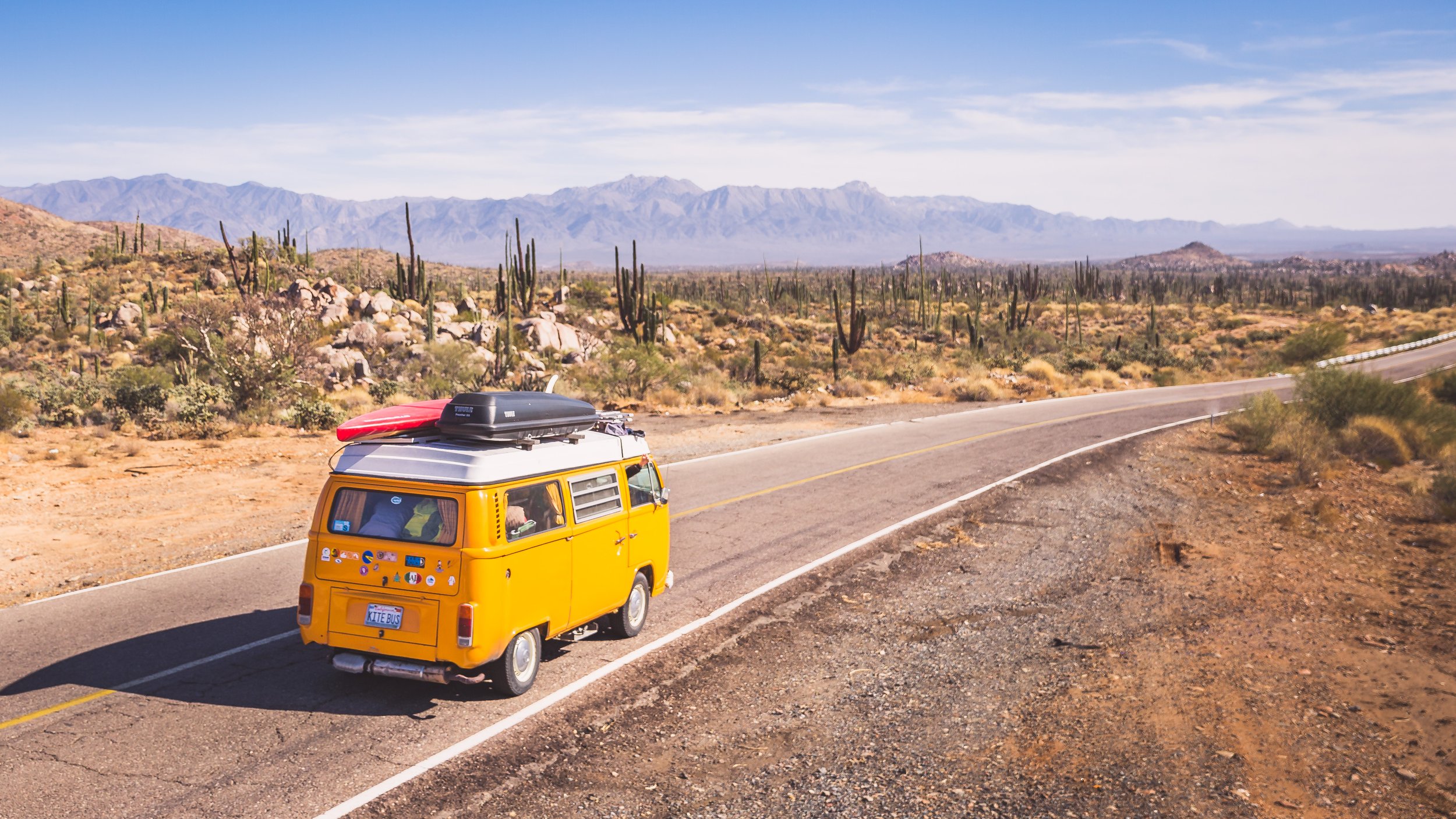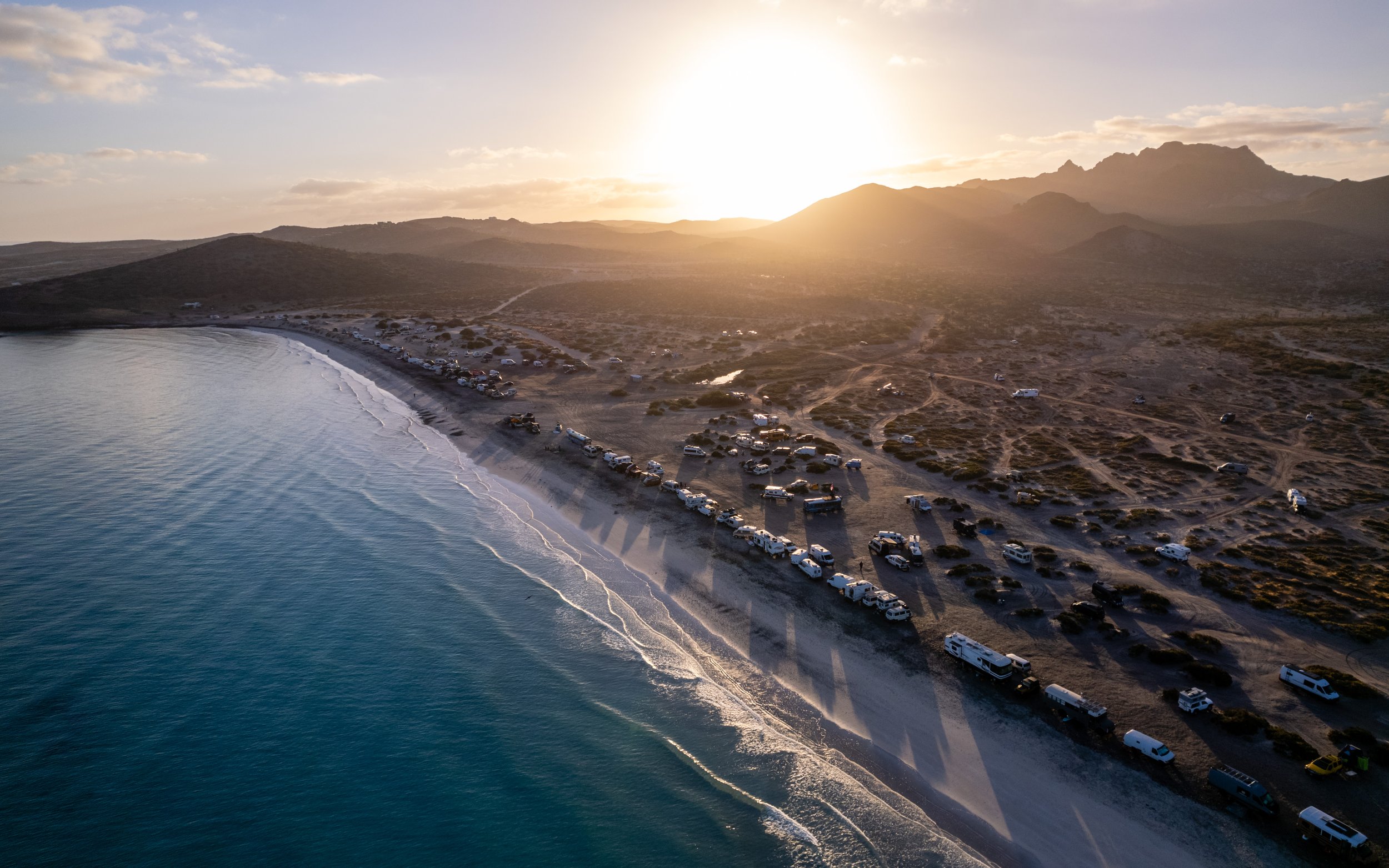
Traveling in Baja California
Pro-tips for driving and getting around in Mexico
-
Good Manners
It is vital to remember that we are guests in another country and that we should treat Baja and the people who call it home with kindness and respect. Baja is a place like nowhere else, and the people who live there are an essential part of its beauty. Be polite, and leave it better than you found it.
-
Don’t Drive At Night
There are no lights along most of the highways in Baja, making it very difficult to see your surroundings. Most of the peninsula is very rural and it’s not uncommon for livestock to graze near the road at night to avoid the heat of the day, or to lay on the asphalt at night for warmth.
-
Narrow Highways
Highway 1 and 5 can be as narrow as 19 feet in some spots, and you’ll be sharing it with 18 wheelers and busses. Give them space and adjust your speed so that you won’t be going around corners or cliffs at the same time. Keep as far right as you can around blind corners. Also, keep an eye out for cyclists. Same thing goes for rural backcountry roads to some of the most pristine beaches.
-
Repairs
No one is more adept at fixing a car, even without the proper parts, as a Mexican mechanic. Get a price in advance, be prepared to pay in cash, double the time estimate, and expect to do several passes/rounds of revisions before it’s perfect. Friendliness, good manners, and generosity will go a long way. We love Rogelio at Geraldo’s VW in La Paz. No matter the vehicle, he knows someone who will take care of you.
-
Turn Signals & Flashing Lights
Local drivers use their hazard lights to indicate when they need to slow down in response to something ahead, and flash their headlights to indicate they just passed a hazard. They will also use the left turn signal to let the car behind them know when it is ok to pass. What if the driver in front of you is actually signaling a left turn? Be sure before you pass. You must remember that the person behind you may take your turn signal as a signal to pass. Put your hazard lights on, gradually slow down, and give the left turn signal with your left arm out of the window. Watch the vehicle behind in case they try to pass.
-
Military Checkpoints
There are 4 or 5 military checkpoints along the Baja Peninsula. Don’t let the sight of uniforms and machine guns alarm you; they’re looking for Narcotrafficantes, and enjoy checking out our ridiculous gringo vehicles. They will ask you where you are from and where you are going. They may ask you to step out of the vehicle so they can perform a routine inspection. Take your wallet and/or purse with you, secure or remove any pets, and casually watch your belongings as they inspect. Be courteous and you will be on your way in no time
-
La Policia
Should you be stopped for a traffic violation you will be asked for your driver’s license, registration, and told what you did wrong. Often they will hold up a laminated card indicating your fine amount (in the hundreds of dollars). Don’t panic. We’ve all been there. Our advice is to consider the situation as a travel tax, commonly called a “modita” i.e. a bribe. Say “no”, and that you only have a few pesos, and offer 100-200 pesos. You will not be arrested for offering. Eventually they will relent and take whatever small sum you offer.
-
Fuel
You aren’t allowed to pump your own gas in Mexico. When buying gas, make sure the pump is set to zero before pumping begins. If someone washes your windows, give them a small tip (5 pesos), even when it is the gas attendant. It is not uncommon to also give a small tip to the person who pumps your gas. Most stations accept cards (tarjeta), but always have some pesos in case the machine isn’t working. If you run out, ask a Mexican if you can buy a gallon. If they have it, they will help you. Be generous, they are rescuing you. Stop for fuel often. There are a few stretches with over 100 miles between stations. If you take highway 1, there’s a section between El Rosario and Guerrero Negro with no stations for 220 miles.
-
Topes
AKA Speed bumps. Mexico places “topes” on the highways, usually entering and exiting towns. Sometimes there’s a sign warning you, sometimes they’re painted yellow, sometimes both, and sometimes neither. Some are small but most will knock the fillings out of your teeth and turn the inside of your van into utter chaos if you go over them at high speed. It’s easy to get complacent after driving a hundred miles through empty desert, but if you see signs of civilization up ahead be prepared to slow down. Even if it’s just a few roadside stores, a bus stop, or a crosswalk, the topes are ever-present, lying in wait to strike when you least expect it.

Did we miss anything?
If you have a question that wasn’t answered by this guide, shoot us a message and we’ll look into it.
